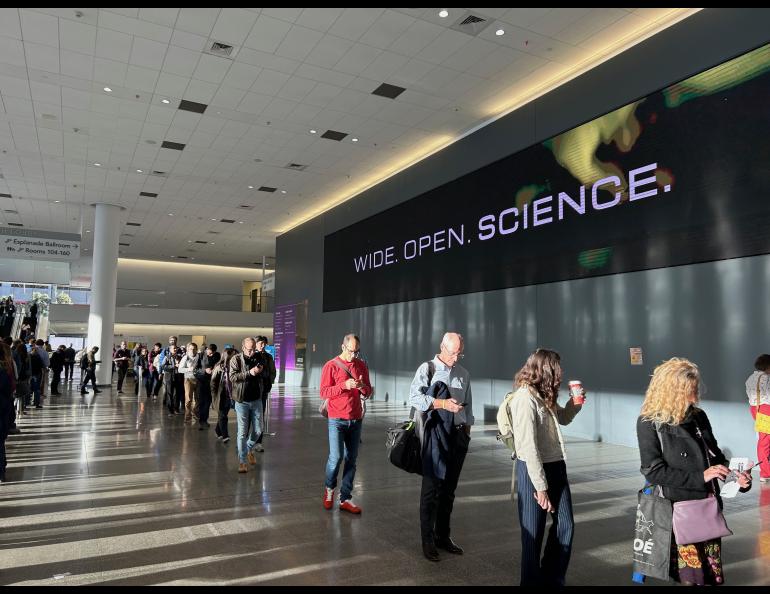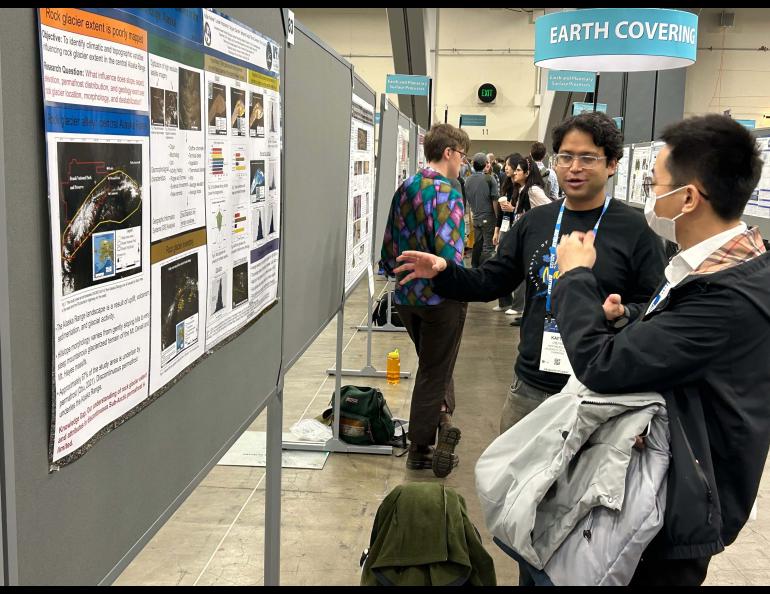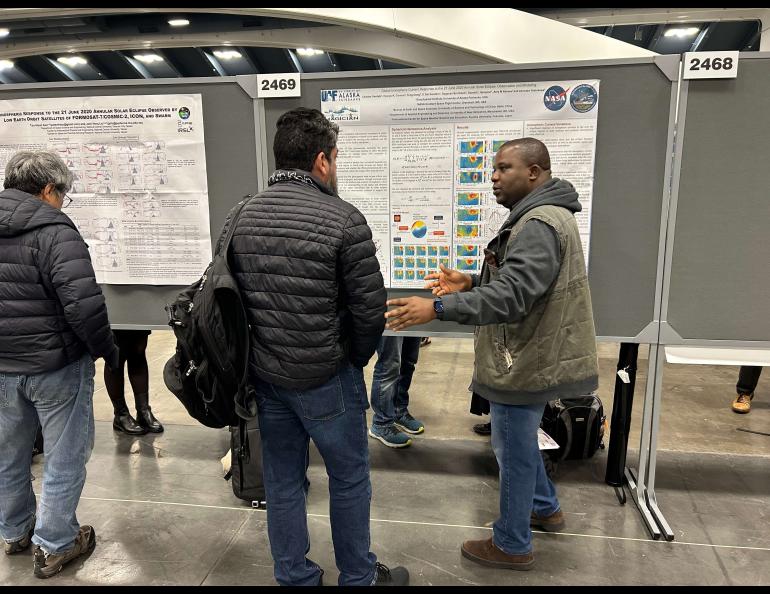About 130 University of Alaska Fairbanks researchers will be presenting their work at the annual meeting of the nation's leading geosciences organization.
The American Geophysical Union's annual weeklong gathering started today in San Francisco. More than 20,000 people usually attend each year's annual meeting.
The event includes academic institutions such as UAF, government agencies such as NASA, and numerous businesses and other organizations.
“AGU is the country’s prime venue to showcase research to agencies and colleagues in academia,” said Hajo Eicken, director of the UAF International Arctic Research Center. “Presenting posters, talks, sharing sessions, outreach events, or organizing an entire showcase of events like Monday’s Alaska Climate Adaptation Science Center workshop help connect IARC research to colleagues including leading authorities in the field and agency personnel.
“IARC research combines Arctic systems perspective with place-based research providing insights difficult to attain through other means. Highlighting such work in a national context is important and appreciated.”
Numerous UAF research institutes and academic units are represented at AGU this year: the Geophysical Institute, International Arctic Research Center, Institute of Arctic Biology, Institute of Northern Engineering, College of Natural Science and Mathematics, College of Engineering and Mines, Toolik Field Station and College of Fisheries and Ocean Sciences.
The science conference offers graduate students and postdoctoral researchers a premier venue to showcase their research.
“The nearly 50 students among the UAF presenters is a strong indicator of UAF’s research productivity,” said Nettie La Belle-Hamer, UAF’s vice chancellor for research. “The contributions to this meeting by graduate and undergraduate student researchers are important to UAF’s reputation and growth, as well as to the careers of the students themselves.
“Making sure UAF students have these opportunities has long been integrated into our culture as a research university and will help propel us from R2 to R1 in the Carnegie ratings,” she said. “UAF ranks in the top 7 to 8 % of all research universities. We want to be in the top 4 % to become an R1 university, which will benefit students and faculty in many ways.”
Presentations by UAF researchers are wide-ranging, covering subjects such as Jupiter’s magnetosphere, Earth’s aurora, Arctic tundra ecosystems, sea ice, permafrost thaw, advances in satellite remote sensing, science education and space weather.
The event is also an opportunity for UAF research leaders to have direct talks with representatives of funding agencies such as NASA, the National Science Foundation, U.S. departments of Defense and Energy and U.S. Geological Survey.
“For Geophysical Institute researchers, especially early career scientists and graduate students, the AGU meeting is a great place to network and to talk with federal sponsors of research funding,” Geophysical Institute Director Robert McCoy said.
“The talks, poster sessions and sidebar discussions help researchers gain a broader perspective on their fields,” he said. “It helps them generate new research directions, come up with new experiments and observations or identify an existing database to mine for solutions to long-standing problems.”
The annual Arctic Report Card is one of the major events that UAF is involved in each year. The report card is produced by the National Oceanic and Atmospheric Administration and documents how warming air, ocean and land affects people and ecosystems. Several International Arctic Research Center scientists contributed to the 18th Arctic Report Card to be released Tuesday at the AGU meeting.
“The Arctic Report Card release attracts leading science journalists in the country and presents a great opportunity to further delve into the implications of these findings for science policy, planning and decision-making,” Eicken said.
“Like no other venue in the country, AGU brings together agency program managers and senior leaders, researchers and other practitioners to learn about the most recent findings of climate and environmental science with policy implications,” he said.





